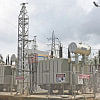The cooling conundrum

One of the first "culprits" of energy leakage identified during the first week of the government's austerity drive was air conditioners. A section of the press listed the government offices that have installed over 1,000 tonnes of air conditioners and are paying crores of taka in annual electricity bills. The report did not mention the cooling capacity required for the floor spaces of the offices concerned, and thereby provides an incomplete picture. The general tenor croons an argument against the luxury of public officials. I will not be surprised if those journalists were writing their reports sitting in their centrally air-conditioned corporate offices – worse even, writing from a room fitted with a 30-year-old cooler machine that is known for guzzling up the electricity. After all, keeping cool at a time when the mercury rises is more than a matter of luxury or comfort; it is a necessity.
The problem is deeper than this sectoral air-conditioner-bashing for the sake of saving energy. The problem is even bigger than the artificially orchestrated energy crisis during the Russia-Ukraine war. The problem is even bigger than the question of affordability. For us, the problem lies in the sweltering July heat, when an unusual heat wave is making its presence felt in a season that the calendar says is monsoon. One doesn't need a Scandinavian teenager to announce that climate change is here. I wish the reporters dug a little deeper into the problem and focused on the horrible truth that involves a feedback loop: "Warmer temperatures lead to more air-conditioning; more air-conditioning leads to warmer temperatures." I wish they had mentioned the urban building spree that necessitated the "load-building" for electric appliances. And once we realise our role in the creation of the feedback loop, we will realise that the solution lies not in setting the air conditioner at 26 degrees Celsius or wearing smart casual clothes.
As the world gets hotter, at a consumer level, buying an air conditioner is a natural individual response for those who can afford these power-hungry appliances. We need to understand why the air conditioner sellers are advertising lucrative offers on energy-saving and financial payment schemes to buy their products in instalments. What they will not tell us is the fact that their products release gas refrigerant R-22 and HCFC (hydrochlorofluorocarbon) into the air, causing ozone depletion. The more the heat becomes unbearable, the more prone we will be to buying an air-conditioning device. The cooler I try to stay inside my room, the hotter my surroundings (as my monthly utility bill) will become.
They say, on average, a small unit of air conditioner cooling a single room consumes more power than running four refrigerators. A central unit cooling system in an average flat uses more power than 15 refrigerators. According to an analyst at the International Energy Agency (IEA), during a heat wave in Beijing in 2018, air-conditioners consumed 50 percent of power capacity.
The growing necessity for cooling appliances all over the world will likely increase the current figure of one billion single-room air-conditioning units to 4.5 billion units by 2050. And air conditioners are going to be as pervasive as the mobile phones. "The IEA projects that as the rest of the world reaches similar levels, air-conditioning will use about 13 percent of all electricity worldwide, and produce two billion tonnes of CO2 a year – about the same amount as India, the world's third-largest emitter, produces today" (The Guardian, August 29, 2019).

In the post-World War II US, the consumer demand for air-conditioning has been helped by the industries behind the great post-war housing boom. To address the housing needs, architects in the US went for vertical growth. For both hot and cold weather, air-conditioning provided a quick solution. Air-conditioning proved essential for the 31 million new homes constructed between 1946 and 1965. They ignored the climate concerns with a mentality that "just about any problems caused by hot climates, cheap building materials, shoddy design or poor city planning could be overcome, as the American Institute of Architects wrote in 1973, by the brute application of more air conditioning." Historian Gail Cooper wrote, "Architects, builders and bankers accepted air-conditioning first, and consumers were faced with a fait accompli that they merely had to ratify."
As our economy is getting stronger, we are seeing a similar boom in our real estate construction. But I think our designers and policymakers have done us a huge disservice by not learning from the mistakes of the West; they replicated the model for us that contributed to "the air-conditioning trap." Our construction companies, electric manufacturers and policymakers have willingly or unwittingly ensured that air-conditioning remains an integral part of our physical growth. The electricity needed for the appliances adds to the "load-building," which will make us rely more on the countries that produce energy.
Our architects followed the footprints of their Western mentors in designing buildings, which are not sustainable for our climate. Why do we need a sealed tower in a country that is blessed with six seasons? Why can't I open the window of a tall building where I can use cross-ventilation? In Bangladesh, we don't need the insulation of a cold country or the heat shields of a desert. We need buildings with materials that can breathe and absorb less heat. Instead, we are copying designs found on the internet to raise buildings that trap heat.
The West learnt from its mistakes and pursued sustainable architecture. For instance, the goal is evident in its efforts to improve the environmental performance of buildings through its Leadership in Energy and Environmental Design (LEED) rating system, pursued by the US Green Building Council (USGBC) in 2000. In Bangladesh, the Housing and Building Research Institute developed the Recommendations for Green Building Code, 2012 and the proposed Bangladesh National Building Code (BNBC), which are beginning to give much-needed attention to energy consumption and climate impact. But what to do with the many impractical buildings fitted with these cooling devices that are detrimental to both our environment and our exchequer? It's not only the government buildings that we should worry about. The crisis has allowed us to reflect on the situation and think of the entire industry that contributes to the feedback loop.
Dr Shamsad Mortuza is the pro-vice-chancellor of the University of Liberal Arts Bangladesh (ULAB).

 For all latest news, follow The Daily Star's Google News channel.
For all latest news, follow The Daily Star's Google News channel. 










Comments